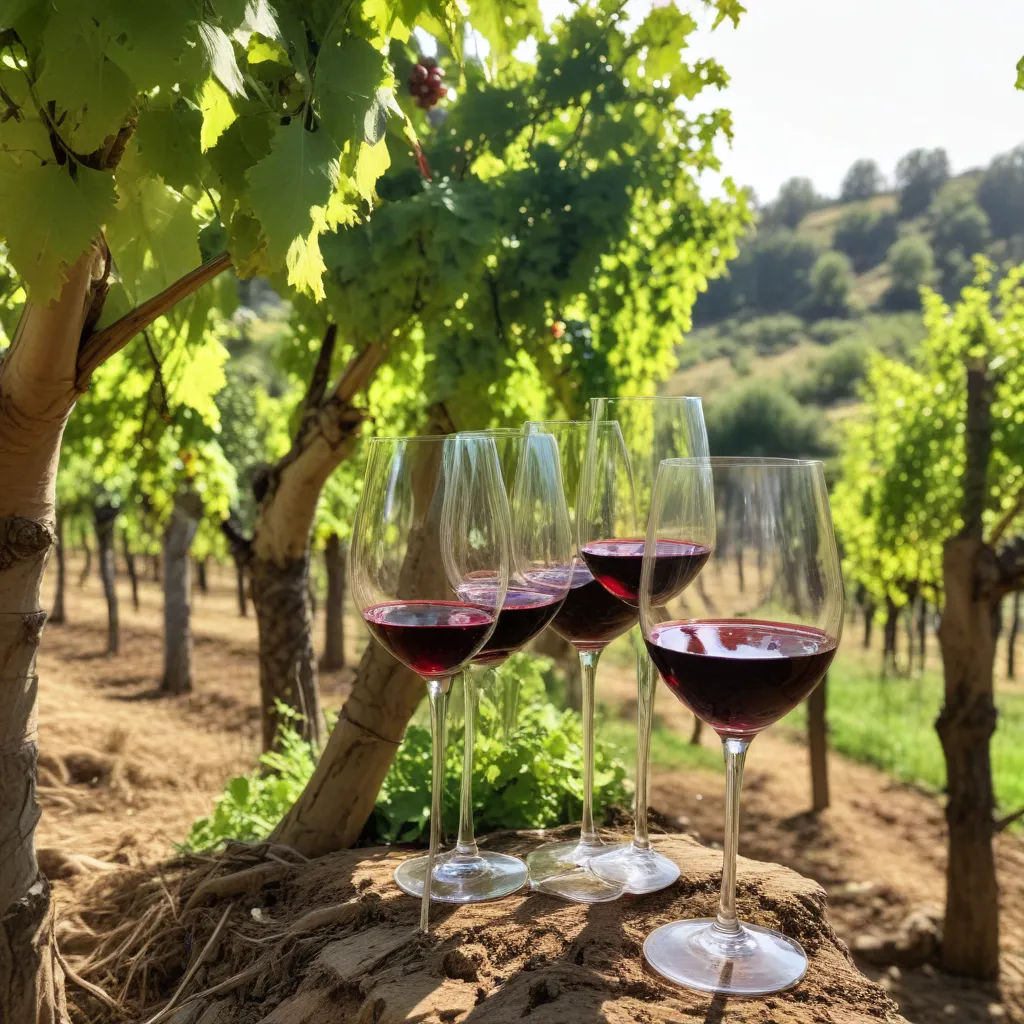
Exploring the Complexity of Organic Wines: A Sensory Journey Through Diverse Varietals
Step into the captivating world of organic wines, where the art of winemaking merges seamlessly with a deep respect for the environment. This sensory odyssey invites you to discover the diverse tapestry of flavors, aromas, and textures that emerge from vineyards cultivated with organic principles.
Defining Organic Viticulture
At the heart of organic winemaking lies a commitment to sustainable agriculture. Organic grape growers eschew the use of synthetic pesticides, herbicides, and fertilizers, opting instead for nature-based solutions that nurture the delicate balance of the vineyard ecosystem. This holistic approach to viticulture not only yields healthier grapes but also contributes to the overall well-being of the land, promoting biodiversity and soil health.
The principles of organic farming are rooted in the belief that a thriving, diverse ecosystem is essential for producing wines that truly capture the essence of their terroir. By harnessing the power of natural compost, cover crops, and gentle pest management techniques, organic vintners coax out the inherent character of their grapes, allowing them to shine without the interference of harsh chemicals.
Diverse Organic Wine Varietals
Embark on a journey through the captivating world of organic wine varietals, where each grape variety offers a unique sensory experience.
Red Wine Varietals: Explore the robust complexity of organic Cabernet Sauvignon, with its dark berry aromas and structured tannins, or the lush elegance of Pinot Noir, revealing delicate layers of red fruit and earthy nuances. Venture further to discover the spicy allure of Syrah, the rustic charm of Sangiovese, and the bold intensity of Zinfandel, each varietal showcasing the harmonious balance that organic viticulture can achieve.
White Wine Varietals: Immerse yourself in the crisp minerality of organic Sauvignon Blanc, the creamy richness of Chardonnay, or the floral delicacy of Riesling. These white wine gems, crafted with meticulous care, unveil a spectrum of aromas and flavors that transport you to the very vineyards that nurtured them.
Rosé Wines: Indulge in the refreshing allure of organic rosé wines, where the sun-kissed hues reflect the vibrancy of the grapes. From the pale, delicate blush of Provence-style rosés to the deeper, more vibrant expressions, these wines offer a harmonious balance of fruit, acidity, and minerality.
Sensory Characteristics of Organic Wines
As you savor each sip of organic wine, you’ll be captivated by the intricate sensory experience that unfolds.
Aroma Profiles
Organic wines often exhibit a captivating array of aromas, ranging from the lush, ripe fruit notes to the delicate floral bouquets. Expect to encounter vibrant scents of berries, stone fruits, and citrus, complemented by earthy, herbaceous undertones that speak to the wines’ connection to the land.
Flavor Profiles
On the palate, organic wines showcase a delicate balance of flavors. The acidity provides a refreshing backbone, while the tannin structure lends depth and complexity. Minerality often takes center stage, reflecting the purity of the terroir and the winemaker’s commitment to minimal intervention. The overall flavor profile is often more nuanced and seamless, with a harmonious integration of all the elements.
Organic Wine Production Methods
Organic winemaking is a labor of love, where the winemaker’s commitment to sustainability is evident in every step of the process.
Winemaking Techniques
Organic vintners often embrace minimal intervention techniques, allowing the grapes to express their inherent character through natural fermentation processes. From carefully managing the fermentation temperatures to employing gentle pressing methods, the goal is to preserve the delicate aromas and flavors of the organic grapes.
Sustainability in the Cellar
Beyond the vineyard, organic wineries strive to maintain sustainable practices in the cellar. This might include the adoption of biodynamic principles, the implementation of waste reduction strategies, and the utilization of energy-efficient technologies to minimize the environmental impact of winemaking.
Navigating the Organic Wine Landscape
As the demand for organic wines continues to grow, consumers are presented with a diverse and ever-evolving landscape of options.
Regional Differences
Organic viticulture has taken root in both Old World and New World wine regions, each offering its own unique character and style. Explore the elegance of organic Bordeaux blends, the structured power of Tuscan Sangiovese, or the vibrant freshness of New Zealand Sauvignon Blanc, each reflecting the distinct terroirs and winemaking traditions of their respective origins.
Consumer Preferences
Organic wines have gained a devoted following among health-conscious and environmentally-minded consumers. These discerning drinkers seek out wines that not only delight the palate but also align with their values of sustainability and responsible consumption. By choosing organic, they contribute to a more holistic approach to winemaking, supporting a future where the delicate balance of the natural world is preserved.
Sensory Experiences: Tasting Organic Wines
As you embark on your organic wine tasting journey, be prepared to engage all your senses and uncover the intricate nuances that make these wines so captivating.
Evaluating Aromas
Begin by taking a deep, mindful inhalation, allowing the primary aromas of fresh fruit and floral notes to awaken your senses. As the wine opens up, look for the emergence of secondary aromas, such as earthy, spicy, or savory elements that add depth and complexity. Finally, explore the tertiary aromas that develop over time, revealing the wine’s evolution and the winemaker’s artistry.
Assessing Flavors
On the palate, savor the taste profiles of the wine, noting the interplay of fruit, acidity, and minerality. Appreciate the mouthfeel characteristics, ranging from the silky, velvety texture to the vibrant, crisp mouthfeel. Finally, consider the finish and the overall sense of complexity that lingers on your palate, inviting you to contemplate the wine’s journey from vine to glass.
Whether you’re a seasoned oenophile or an eager newcomer to the world of organic wines, this sensory exploration promises to captivate your senses and deepen your appreciation for the craft of sustainable winemaking. Raise a glass to the complexity, diversity, and environmental stewardship that organic wines embody, and embark on a journey of discovery that will leave a lasting impression.
